#ethnic food
Text
Things that continue to astound me a little: people who want to vacation in NYC or Long Island not knowing how important bagels are to us. So...
* tri-state here means NY, NJ, and CT (but if you consider yourself in the NYC metro area, you can fudge it a bit)
* North America here is USA and Canada
If you're curious about the history of the New York Bagel, here's the fifteen-minute mini video essay that got me thinking about this topic.
This post was inspired by the fact that several friends who have visited NYC, with me playing tour guide, and more than one has been confused at why I insisted on the bagels as part of the experience.
#new york#new york city#nyc#phoenix polls#bagels#food#ethnic food#judaism#judaism in nyc#disclaimer: I am arguably a new yorker but I am not Jewish and the above tags might imply I am
364 notes
·
View notes
Text

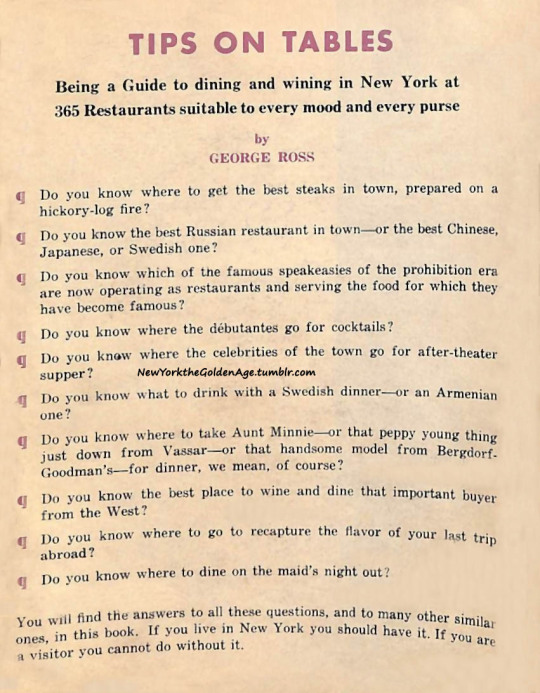

The manual for the sophisticated Manhattan gent: where to take anyone to dinner. It may not look like anything special today, but in 1934, the U.S. (and even New York) was a strictly meat and potatoes kind of place, where fine dining meant turkey. Swedish food! Chinese! Japanese! Armenian! Only in New York.
Photos: The Cary Collection & Common Crow
#vintage New York#1930s#books#dining#restaurants#dining guide#Tips on Tables#George Ross#ethnic food#going out guide#vintage Manhattan#vintage NYC
151 notes
·
View notes
Text
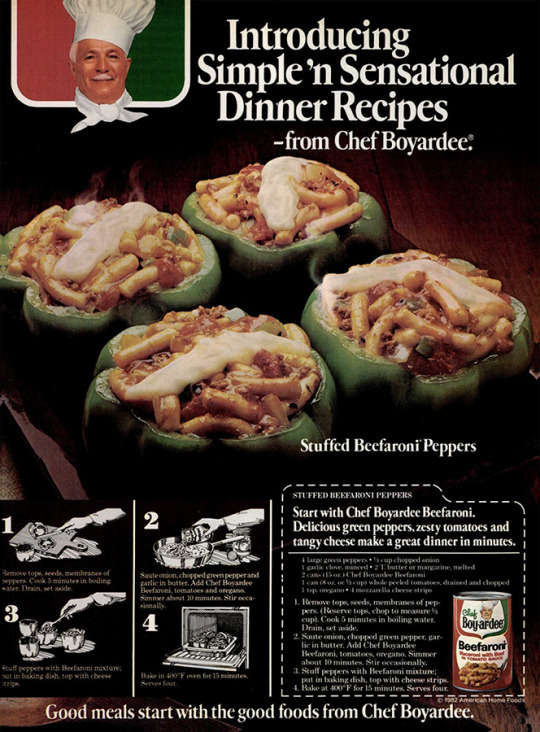
Chef Boyardee, 1983
#chef boyardee#beefaroni#food#canned food#ethnic food#vintage recipes#vintage advertising#1980s#1983
61 notes
·
View notes
Text
this may be a weird worded question but you know restaurants usually have an ethnic food variety that is usually for the theme of the restaurants ex: American, Italian, Mexican, Chinese, etc
Of course people have mixed ethnicity’s so just choose the one you identify with most. If you identify with multiple then choose the one you can think of more restaurants for
for example I’m Mexican and Puerto Rican, they’re are more Mexican restaurants in my area, and I prefer the homemade food my parents make. But I’m a picky eater so take my opinion with a grain of salt
please reblog for bigger sample size
30 notes
·
View notes
Text
"Ethnic"
"Ethnic" feels like a weird descriptor.
Ethnic music: either too specific (would "folk music" be a better descriptor) or too general (which ethnicity?)
Ethnic food: Couldn't all food be considered ethnic? Or...you could just specify the ethnicity??
Ethnic art: ya, same problem again. What is going on here?
Ethnic actor: For jeebus sake, just tell me! What ethnicity?? Is there some reason why we're pussyfooting around?
Wait a minute...Is "ethnic" just a sneaky way of saying that something has a *gasp* nonwhite person origin? How very "us vs. them" of you.
Actually, I will say that the more I think about this, the more it makes me quite angry. It feels like such an utter lack of respect to boil down the vastness of different experiences of people of color into the single word "ethnic". Damn, my brothers and sisters, what kind of ignorance and arrogance is this?
And don't tell me, "it's too complicated". You don't speak for me! I'd actually love to know what the origin of something is! It's not to complicated to tell me this is Igbo music from Nigeria. It's not too complicated to tell me this is Xhosa food from South Africa.
Don't deprive me of the chance of learning something outside my own sphere of knowledge! Give me a chance to appreciate the amazing diversity of this planet's people groups!
But I'm just a random white potato. I don't pretend to have the whole picture here, and I don't pretend to have all the nuance. These are just my random fiery thoughts after seeing three separate music videos on Youtube being called "ethnic". I would love to hear any other thoughts on the matter.
#white people#people of color#poc#ethnic#ethnic music#ethnic food#ethnic art#ethnic actor#thoughts#ethnicity#sometimes it becomes very clear to you how some people divide the world into white people things and not white people things#and incredibly enough those are not nearly fine enough divisions#random white potato#racism#stupid things in the world#colonialism#colonization#words#words are politics#makes me so angry
3 notes
·
View notes
Video
Lunch is Served in Fujian, China.
#China#Fujian China#chinese food#food#food porn#food and drink#fish balls#tasty#delicious#lunch#dinner#snack#ethnic food
56 notes
·
View notes
Text
Conflict Kitchen
Conflict Kitchen is an art project that ONLY serves food from countries the US is in conflict with (currently). Their food wrapper use quotes from interviews they do with people of said country.
The country's food they are serving currently? Palestine
You can look at their food wrappers for Palestine on their website (linked below)
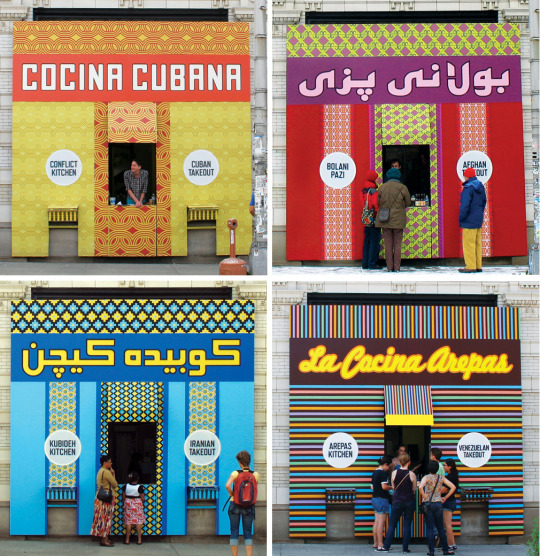
#politics#us politics#world politics#palestine#free palestine#israel#gaza#free gaza#gaza strip#ceasefire#ceasefire now#food#drink#food and drink#ethnic food#palestinian cuisine#art#political art#activism#protest art#from the river to the sea
4 notes
·
View notes
Text
Lebanese Society's Coffee Addiction


#lebanon#photographers on tumblr#beirut#street photography#lensblr#original photographers#streetphotography#middle east#oriental#coffee#lebanese#orientalism#ethnic food
33 notes
·
View notes
Text

Members of the Mulberry Court Ethnic Foods Club liked to dress in the traditional costumes coinciding with their choice of dish.
Parents Magazine November 1944
3 notes
·
View notes
Text
Went to this awesome Peruvian restaurant the other night with friends and we got to sit outside! the weather was great!! 💜💜

Lomo Saltado is the top dish, middle is Jalea, and bottom are the three desserts Crema Revuelta, Passion fruit mousse,and Lucuma Mousse.


#peruvian#peruvian food#Jalea#Lomo Saltado#Passionfruit mousse#Lucuma Mousse#Crema Revuelta#fried fish#beef tip stir fry#food#personal#food mention#food ment tw#dinner#ethnic food#spanish food#dessert#restaurant#Peru#delicious#delicioso
7 notes
·
View notes
Text
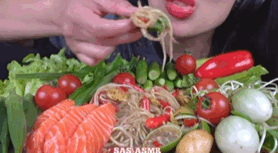
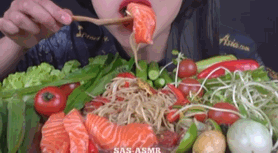
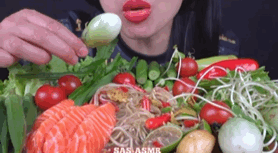

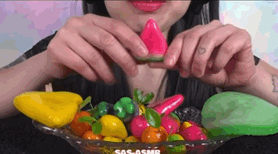


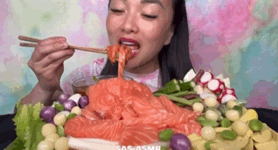
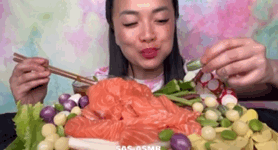

Credit: SAS-ASMR
#my gifs#asmr visuals#indigenousstims#asmr relax#asmr#stims#food asmr#mukbang#sas asmr#luk chup#ethnic food
6 notes
·
View notes
Text
eating steamed crabs
I am explaining to my partner that there is something specifically feral and visceral about eating steamed crabs. You take your fingernails – the closest thing to claws that we have – and you tear the crab into halves, into quarters, prying it apart and digging into crevices to remove tiny white slivers of meat that taste like the sea. After ripping each leg from the crab’s body, you use your teeth to squeeze the muscle out, picturing small holes in the fragile exoskeleton with each closing of the jaw. It comes apart in slivers of shell (spat out into a bowl of the crab’s fallen comrades) and brine as it succumbs to the ravenous wiles of your hands, your teeth, and occasionally a pair of scissors or a single chopstick.
In the end, after an hour or two, you have consumed the substance equivalent of two or three small meatballs, and your fingers have pruned like it truly was the sea you are swimming in, rather than a mixture of black vinegar, grated ginger, and the crab’s internal fluids. Something in your mind is satiated – its not certain just what that something is, but I can assure you it is not your hunger.
My mother tells me of the way my grandfather eats crab – he patiently removes each slippery wedge of meat, slowly creating a pile on his spoon, and once the entire crab has been excavated, he drenches the pile in vinegar and ginger before putting it all in his mouth. She only pries apart the body, ignores the legs altogether, and pawns off the claws to me or my father. Her teeth are weak and almost seem translucent, supposedly from having too many antibiotics as a kid in China, and it hurts her jaw to remove the meat from the limbs.
My brother in law refuses to eat even fish with bones in them, claiming that it's too much work. He avoids my favorites – shrimp fried in their shells, with their heads still on; crab and lobster; fish heads and duck feet.
In Chinese, we call meat by the name of the animal it came from, but in English there is a degree of separation. Pig becomes “pork”, cow becomes “beef” or “veal”, even deer becomes “venison”. In Asian grocery stores you can see tanks of fish, their eyes like marbles looking through the cloudy water and scratched up glass – those eyes with the texture of jelly once cooked, with a ring of clear bone to be spat out after swallowing the umami insides. At the outdoor meat markets in China you can find live chickens, and if you buy one they’ll kill it in the back, and de-feather it for you too.
There is something lost in eating crab cakes, and it is not the sensation of getting a piece of shell stuck between your teeth. Or perhaps that is what’s lost, the sense of realness, the sense that this thing that you are eating was once alive, that its legs were once used to scuttle along the ocean floor or the riverbank, depending on what kind of crab you have. It is another degree of separation from the idea of the animal, the animal that the crab once was, that you once were.
Tonight, my mother steamed crabs for dinner, and I take a picture of the glass bowl full of cracked crab shells in red and white and yellow and brown, and crab gills which are the color of eggshell, and two corn cobs. I send it to my partner and caption it “the aftermath of crab-eating”. Steamed crabs connect me back to my roots, back across the sea where these crabs came from to China, back to being human, to being a creature with long fingers for grabbing, and teeth for biting, and a pair of scissors to pry apart crab shells with. There is something special about accidentally flinging a claw across the table and onto the carpet, or spraying yourself in the face with pale yellow brine.
Even now as I write my hands are sticky with it, the lifeblood of something separate from me, sticky with remnants of crab I won’t be able to wash off until I shower tonight, sticky with black vinegar and grated ginger. My partner, lovingly, asks me if I’ve ever heard of a crab cracker.
14 notes
·
View notes
Text
Question to other non-white people of relatively unknown ethnicities and origins: Do you have this conversation with white people too?
3 notes
·
View notes
Photo

Chef Boy-ar-dee, 1953
Theme Week: Dads 👨
45 notes
·
View notes
Text
making this again soon!

3 notes
·
View notes
Text
The Commodification of Koreatown and Benefits of Tourism: “Old” and “New” Style Restaurants
Suha Cho
“Old” vs “New”:
Out with the old and in with the new? Or if it isn’t broken, why fix it? These are the questions asked when looking at the restaurants Koreatown, Los Angeles has to offer. From traditional style dishes to Korean-Italian fusion, Koreatown now has restaurants with “new” and “old” style options. The restaurant highlighting Koreatown’s “old style” cooking or better labeled as Korean traditional style cooking is Mapo Kkak Doo Gee. Mapo is a hole-in-the-wall restaurant that serves Korean comfort food and classic dishes such as Bibimbap (Mixed rice) and Budae Jjigae (Army stew). Although the interior is small in size, with seating for only 30 people, their menu offers a wide variety of traditional dishes with 37 options in total. Each order comes with eight different side dishes or Banchan, which is a staple in Korean dining. The customers consist of mostly elderly Korean people, ages 40 and up, and the workers are all Korean immigrants as well. With all factors included, this restaurant has many aspects within its interior, exterior, plating, and design that categorize under the traditional Korean style. The restaurant that represents a “newer” style of Korean cuisine within Koreatown is called Hanchic. Hanchic is a Korean-Italian fusion restaurant that serves dishes inspired by Korean and Italian recipes combined, with menu options ranging from Bolognese Mandu and Bulgogi Risotto. The restaurant is fairly new, opening in September 2020 and opening indoor seating in early March 2021. Similar to Mapo, Hanchic has seating for around 30 people but has seasonal menus that include their popular dishes year-round. Their demographic consist of the younger generation along with non-Korean individuals, fitting under the category of “new” style Korean cuisine.
Commodification and Tourism:
Despite the differences in style, both restaurants can be seen commodifying their cultural space, marketing within their diversity, and benefiting from the tourist industry. Looking at Aytar and Rath’s writing called “The Transformation of Ethnic Neighbourhoods into places Leisure and Consumption,” the writers focus on tourism and its inclusive benefits, offering job opportunities to a wide range of people within the community. This includes natives, immigrants, skilled, and unskilled, males, and females. However, they emphasize that not every individual involved in the tourism industry is automatically benefiting from this business, considering its high risks. Relating back to Mapo Kkak Doo Gee and Hanchic, the difference in style between the two restaurants and the gap in customer demographic affect the way each of them make business. For example, in an article called “A tale of two Koreatowns: Hip spots thrive while older businesses struggle amid Omicron” by Jeong Park, Mapo Kkak Doo Gee is mentioned for their struggles during COVID; “‘The cost of ingredients is also going up. But raising prices is difficult when customers are already staying away,’ said Beak of Mapo Kkak Doo Gee.” On the other hand, Hanchic took advantage of the COVID situation and signed a lease for their restaurant, later popularizing it all over social media. The owners of Hanchic have been putting the benefits of tourism to use, attracting tourists to Koreatown through social media, using the slogan “not so traditional Korean,” and using fusion-style dishes to attract non-Korean customers. In an article called “Hanchic: Where Bouillabaise meets Bulgogi” by Hadley Tomicki, the owner explains, “I wanted to portray Korean flavors in an aspect where I can meet in the middle with people that don’t know Korean food.”
Fusion and Gentrification of Asian Cuisine:
The topic of fusion restaurants, however, brings in concerns that authors Aytar and Rath mention in their writing about how immigrants are not always on board with the transformation of their space turning into tourist attractions, considering many of the shops could have been established with the intention of catering to the needs of the in-group only. The owners of Mapo Kkak Doo Gee are immigrants from Korea, while the owners of Hanchic were born here in the U.S. While Mapo uses traditional Korean styles and can attract Korean people along with tourists looking for authentic flavor, Hanchic’s fusion may attract more tourists rather than people within the community. This also brings into question the topic of fusion restaurants and the act of gentrification within cultural cuisine. In an article called “The Gentrification of Asian Cuisine,” the authors Katherine Ly and Manisha Wanniappa talk about the rise in popularity of Asian cuisine through social media. They emphasize the white-washing of Asian foods through Westernized Asian dishes, fusion restaurants, and food trends. However, the article fails to mention the question of whether or not Asian fusion restaurants owned by Asian people, are partaking in an act of gentrification of Asian cuisine. Or is this considered a way in which they are using recipes authentic to an Asian style of cooking and adding a twist? If so, who then are they trying to appeal to when serving fusion dishes, and does it positively or negatively affect the cultural space within the community? Despite these aspects, Mapo Kkak Doo Gee and Hanchic are both commodifying their cultural space in different ways with the benefits of tourism within Koreatown, Los Angeles.
#koreatown#ktown#losangeles#gentrification#food#ethnic culture#ethnic community#ethnic food#commodification#tourism#mom and pops
2 notes
·
View notes